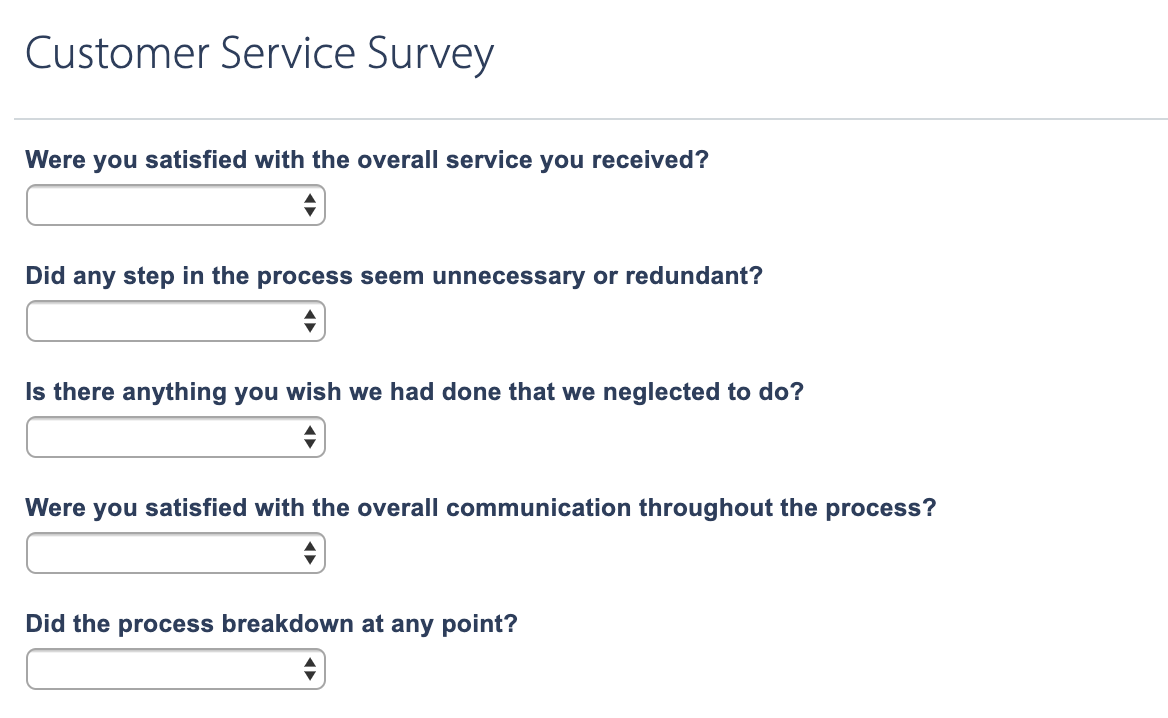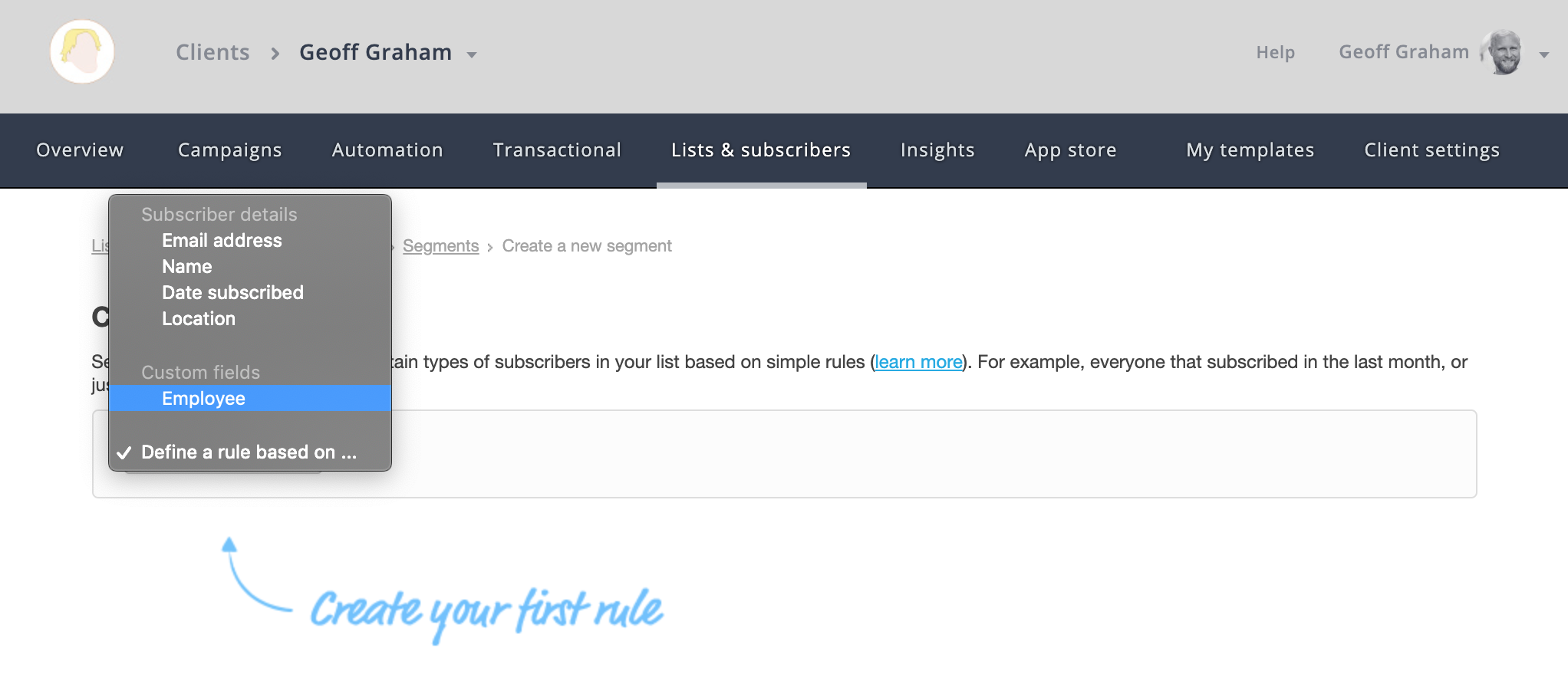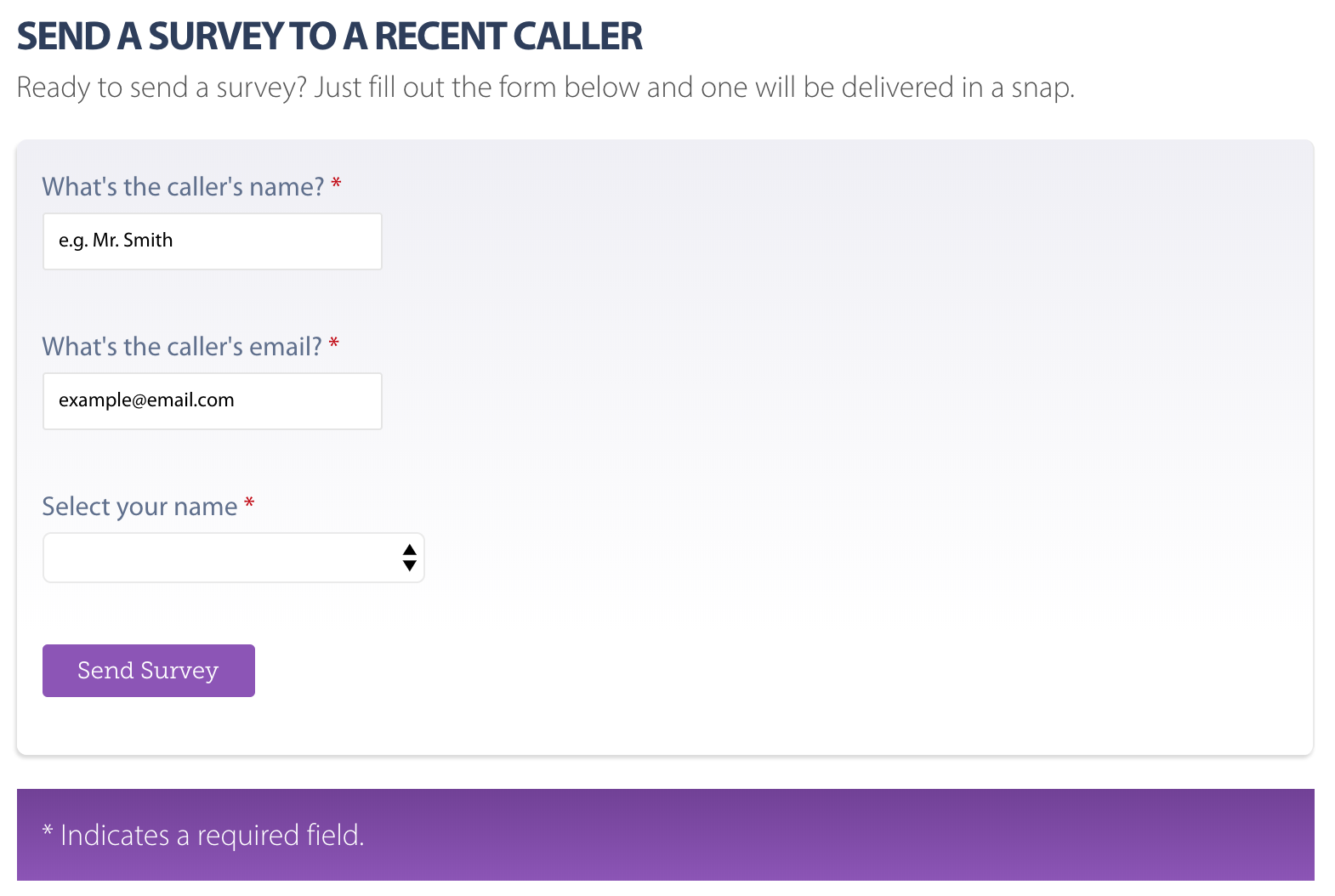Customer Satisfaction Surveys with Wufoo
I was once tasked to create a makeshift customer service survey that would allow an employee to receive a customer call and send a survey to the custom once the call ended. The goal was to track customer satisfaction, which is a totally legit thing to want.
There are some solutions out there that do this out of the box. The problem was that my client neither had the desire or budget to use them. They did, however already use Campaign Monitor for sending emails and Wufoo for embedded forms. I figured, hey, if MacGyver can create complex gadgets out of bubble gum and paper clips, then I can cobble something together with these two robust tools. Right?
Right!
Knowing the data
The biggest challenge for a phone call is that it’s sometimes difficult to track down an email address during the call. Without that, there’s nowhere to send the survey, so that’s a big bummer. That means the employee needs to capture the address, whether it’s getting a custom ID at the start of the call or straight up asking for it.
I decided I would spin up Wufoo to create an internal form that employees can use to capture the data. Nothing fancy, only the following fields:
- Employee Name: Used to associate the employee with the call
- Customer Name: Used to personalize the email sent containing the survey link
- Customer Email: Used to send the survey link
Wufoo makes this trivial, of course. Create a new form, add a few text fields, copy and paste the snippet onto a page. Voilà! We have a form! We could make it a little simpler (and dummy-proof) by creating a select field containing all employee names so the data remains consistent. We can also make the fields required and use Wufoo’s built-in validation to ensure the email address is properly formatted.
There’s also a lot of flexibility with the styling to boot, meaning the form can look like a native part of the site.
The employee can now fill that out during the call and submit it once the call is done. Plus, the form is embedded on a private page that can’t accidentally get out to others.
Sending the survey
Did you know Wufoo can auto-send emails anywhere once a form is completed? Well, now you do!
This is super handy for most cases and I really wanted to use it for this task, but decided to go with Campaign Monitor because there’s one little snag which is…
Each employee needs a unique survey form
Yep, that’s a thing. Otherwise, we’d have to ask the customer to identify the employee’s name in the survey, which we can’t expect them to know. Sure, we could use another select field, but that requires the customer to recall the name as well, and not having the employee name makes it difficult to associate customer satisfaction results with specific employees for tracking.
So, the email needs to contain a unique link that goes to a form that’s associated with a specific employee. Again, there are solutions for this stuff, but we’re MacGyver’ing this thing.
I’m so glad Wufoo makes building forms so simple. All I needed to do was create one form, duplicate it for each employee, and change the employee value in each one.
On that note, we don’t necessarily need to display the employee’s name in the survey form. Wufoo accepts custom CSS which means we can hide any field! Plus, it allows us to pre-populate a field, so that gives us hidden fields that already contains the values we need to associate the survey data with a specific employee and create a webpage containing the form for that employee. ?

Now that there’s a survey for each employee, all I needed to do was create webpages where I could embed each employee form and use those as the survey links.
Here’s the flow:

Auto-sending the survey link
Let’s go back to the first form for a moment. Remember, that’s the one an employee fills out and submits once the call has ended. This should send an email to the customer containing a link to the webpage that has the survey form for that employee.
Campaign Monitor can segment lists by custom variables. In other words, we can create one list that contains all of the customers who have called in and create sub-lists that are divided by employee since we have that as a value in the internal employee form. And, since Campaign Monitor and Wufoo play nice together, all of the data we capture is contained in both places.

The other thing Campaign Monitor can do is trigger emails to send based on conditions. So, if the employee submits the internal form, Campaign Monitor can be configured to send a specific email template/campaign to a new subscriber that is added to the list. If we set up a trigger to send an email to any new customer who is added to the list, we can personalize the email to contain the link for the employee who took the call.
Watch the data roll in!
Great! We have a form employees can use to send a survey, surveys set up on webpages for each employee, and an auto-triggered email that’s sent to a customer containing the survey link for the employee who submitted the internal survey.
All that’s left is to monitor the data and — wouldn’t you know it — Wufoo has reporting built right into it where all of that can be accessed and monitored 24/7. Heck, it even permits us to create custom reporting dashboards on a per-survey basis.

Wrapping up
Was this the best way to hack things together? Probably not. Is it bulletproof from incorrect data or misuse? Not entirely. But the fact that Wufoo could intervene at all and is flexible enough to power this sort of thing is awesome. It’s more than awesome; it’s amazing. It sure wasn’t intended to be used that way, but it did the trick anyway.
Thanks, Wufoo!
The post Customer Satisfaction Surveys with Wufoo appeared first on CSS-Tricks.
